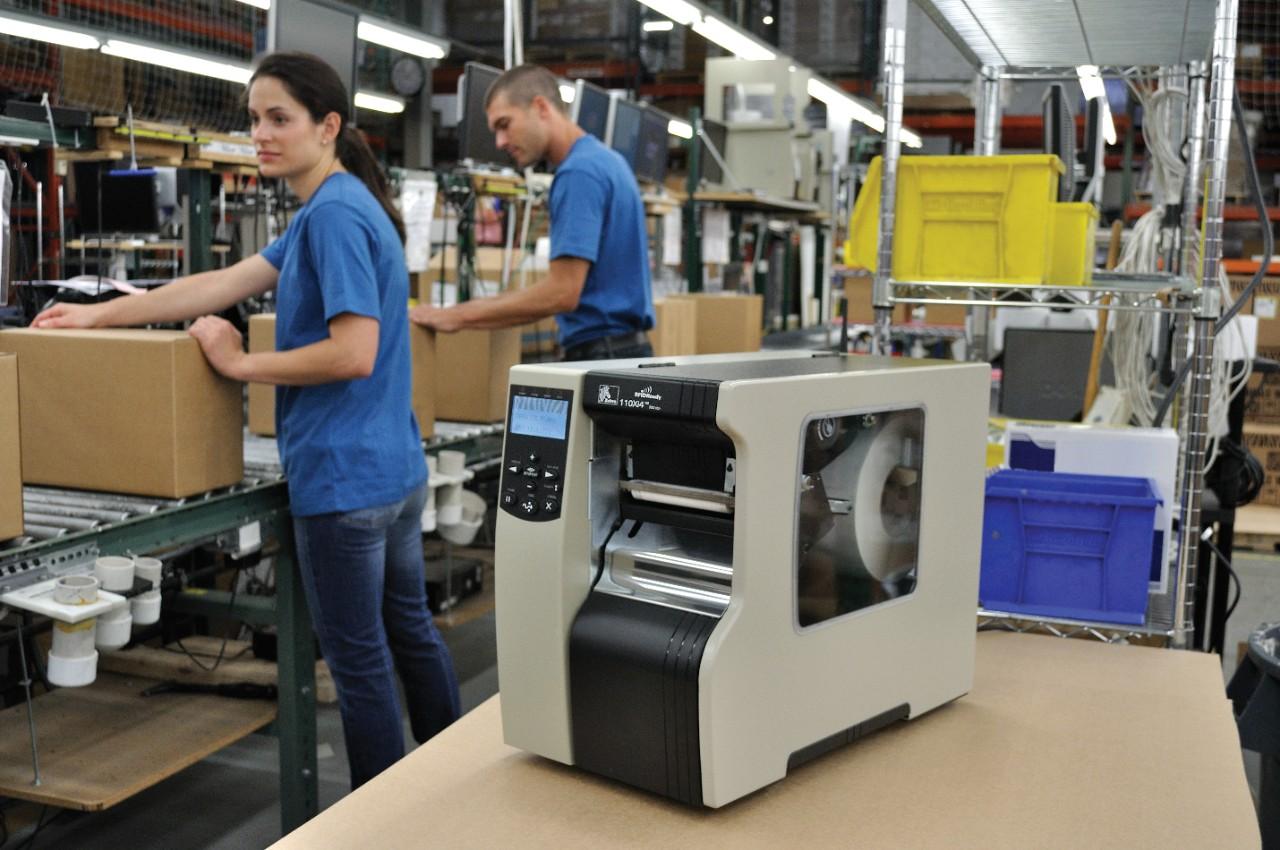Dematerialisation may have enabled SMEs to go paperless in a number of their business processes but printers still play a key role in fulfilling legislative, administrative and logistical obligations. How long they last depends on various criteria, from the volume and nature of what they’re printing to how well they’re looked after.
The fact is that not all printers are made the same and a machine that prints out a few invoices in the office may not be suited to sustaining the same task in a chilled warehouse. When it comes to considering if your printer is up to the job or whether it’s time to upgrade to a more industrial machine you should ask yourself:
What volume are you printing? From picking lists to labelling products, if you’re outputting large volumes of media then you need a machine that has been designed to consistently cope with high quantities of print, day in, day out.
Where is the printer located? There’s a huge difference between a bakery production area and a carpeted office and the hardware you choose needs to reflect that disparity. If your work environment is a glasshouse or a chilled storage facility, extremes in temperature may cause lesser printers to falter and jam. And don’t forget that in busy despatch and goods in areas, printers can easily get bumped and knocked so casings need to be robust.
Is the print work critical? If what you’re printing is critical to workflow processes i.e. you’re producing labels to identify components for production line assembly then you won’t want production to stop if your printer fails. Any mission critical printing demands an industrial printer.
What about print quality? In some sectors, like the chemical industry, where you’re required to print globally harmonised system (GHS) labels that often need to last a long time, be waterproof and resistant to chemicals you must have a device capable of printing on specialised media. Similarly, if you’re outputting labels that are dense with data you’ll need high quality print performance for both clarity and legibility.
Who looks after the printer(s)?
In some businesses the IT department is responsible for printers while in others it’s likely to be the office/facilities or operations manager. Many SMEs will certainly be familiar with lease+click managed print services (MPS) for front office devices but may not be aware that handful of specialists also offer it for back office machines.
If your business has a number of printers spread across different sites then being able to manage them all remotely will help minimise costs and improve efficiencies. An operational visibility service (OVS) like that designed by Zebra is a cloud-based solution providing detailed information on the health, status and usage of every printer on the network. This enables enterprises to be more proactive in their device maintenance and minimise downtime by preempting failures in their supply chain.
Any SME able to identify with the above scenarios probably needs to look at upgrading to a more industrial printer. These machines are built to be robust with metal frames and chassis, and their life expectancy is up to seven years, some even longer. This length of service delivers cost savings on total cost of ownership (TCO) and more than outweighs the extra money paid out for industrial printers.
Few retailers, manufacturers or logistics operators can afford downtime in their supply chain and this is where industrial printers really shine. They’re geared up for printing high volume and high quality in often very demanding environments. Some of the industrial mobile printers can increase worker productivity by 14 per cent.
Print quality affects more than appearance
SMEs need to understand that poor print quality has implications for both profitability and reputation. For example, illegible barcodes can lead to rejected loads, or even compliance fines. Barcode labels enable firms to track and trace goods and while most companies understand that failed printers affect production, few recognise the vulnerability of the labels themselves through either accidental or malign abuse.
Around 90 per cent of companies printing ‘on demand’ labels do so from the label design programme interface, which risks operators being able to make unauthorised changes to the labels before printing. Without a failsafe label management solution in place on an industrial printer, a disgruntled employee could, for example, add a derogatory label to a regular client delivery.
Not all printers are the same but if your enterprise prints high volume, and requires reliable performance and sharp print quality maybe it’s time to start looking at industrial printers?
Peter Laplanche is managing director of DataTrade.co.uk





